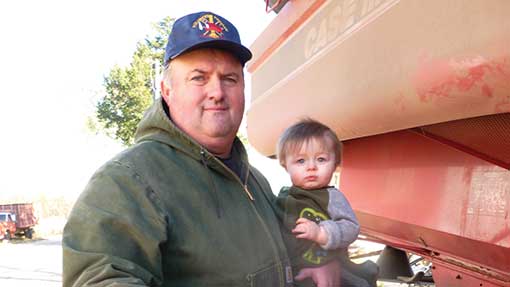Farmer Focus: Cold increases winter kill risk

During the past month we have continued to ride a roller coaster of temperatures while staying dry. For example, yesterday (26 January) the maximum was 58F before a cold front arrived that evening, bringing with it winds in excess of 60mph, dropping the temperature 10C in just 20 minutes. The eventual low this morning was 9F.
Probably of the most interest to farmers in the UK is the winter kill situation here. Dry and very cold conditions would suggest a decent chance of more winter kill than normal, along with some frost heaving of wheat. Our weather typically is extreme, but I do not recall a winter with so many abrupt temperature changes in such a short period of time. It makes it hard to keep people or livestock healthy.
News on the internet tonight suggests a farm bill is finally about to emerge. Details are somewhat cloudy, but as has been predicted, direct payments have been eliminated. It appears crop insurance is intact and perhaps even strengthened, and livestock produces are going to have a somewhat more predictable disaster programme of their own.
I have usually downplayed the direct payment – the equivalent of your single farm payment – as insignificant. I received roughly $7,000/year (£4,220) – as I understand it that would not be much of a SFP – but it was all profit and will be missed.
My crop insurance subsidy this year was $17,000 (£10,240). I paid $7,500 (£4,520) out of pocket and was paid $9,000 (£5,420) back because I had revenue protection and the price of corn fell below the guarantee. Most farmers in the USA claim they want the government completely out of farming – I’d count myself in that number – but I’m not sure any of us really mean it.
With grain prices retreating, weather problems ever present and input prices rising with no end in sight, it is very reassuring to have the minimum income crop insurance promises. Like it or not it seems government intervention in agriculture will last at least five more years with a whole new set of forms to fill out and acronyms to learn.
Brian Hind farms 1,250ha of prairie land, of which 770ha is family owned plus the rest is rented. Of this, 330ha is arable cropping with maize, soya, grain sorghum, alfalfa plus a mix of rye, triticale and turnips for grazing by 200 beef cattle. Grassland is used to produce hay.
Read more from all our Arable Farmer Focus writers

